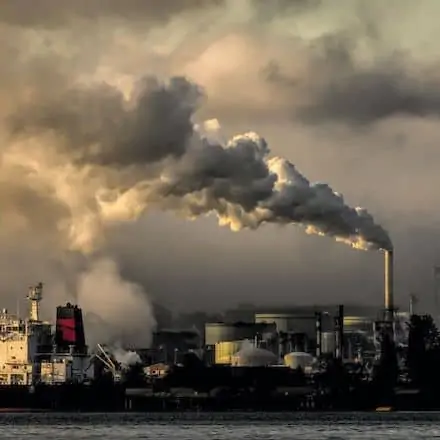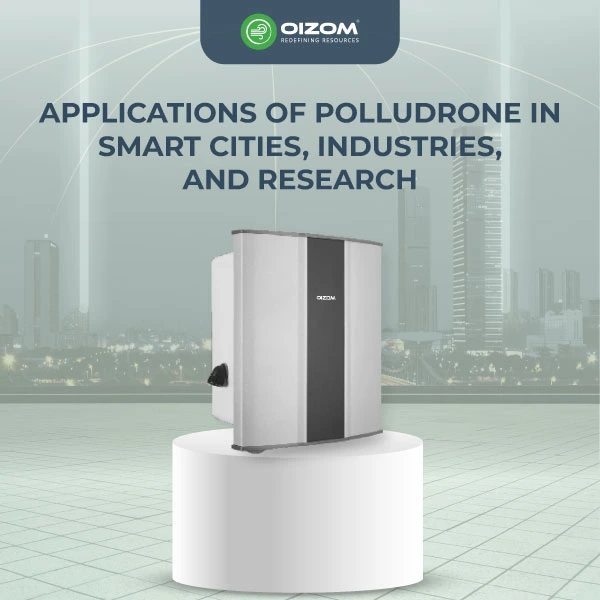The most crucial resource for the sustenance of life is air. Unfortunately, rising air pollution has become a bigger problem globally. As industrial development has progressed, access to clean air has become a luxury, and it’s not just for us. Air pollution has a significant negative influence on flora and fauna living in distant ecosystems.
Air pollutants can travel great distances and are not concerned about territorial boundaries or ecologically sensitive areas. Harmful particles produced by power plants, autos, and mining sites can readily travel hundreds of miles from their source. Which pollutes the pristine natural areas. These compounds include a variety of gases as well as microscopic particles or particulates. These particles can harm human health as well as cause major environmental damage.
If we look into records provided by WHO. Every year, an estimated seven million people die as a result of air pollution around the world. Nine out of ten people breathe air that exceeds WHO guideline limits and contains high levels of pollutants.
HOW DOES RISING AIR POLLUTION AFFECT THE ENVIRONMENT?
All the particles when discharged into the atmosphere react with other atmospheric substances and form aerosols. (a suspension of particles or liquid droplets in the air). Fog, mist, and clouds are examples of naturally occurring aerosols; aerosols produced by human activity are smoke and haze.
Aerosols, when combined with high quantities of air pollutants produced from our industrial hubs, introduce many undesired compounds into ecosystems through the deposition. Due to this rising air pollution, various phenomena take place which affects the environment.
These occurrences have a higher impact on the environment’s general health; before, huge devices were utilized to monitor various air quality measures, which necessitated constant human help. In today’s market, more efficient and automatic sensor-based air quality monitoring has established itself.
ACID RAIN
Rainwater has a pH of roughly 5.6 in normal settings. Because of the existence of carbon dioxide in the atmosphere, rainwater is naturally acidic. However, the combustion of fossil fuels releases acidic gases such as nitric oxide and sulphur dioxide into the atmosphere. Both of these air pollutants react with airborne water molecules, lowering the pH of precipitation and resulting in acid rain.
Such a change in rain acidity has adverse consequences for the environment. This causes water bodies to become acidic, damages plant leaves and photosynthesis, it also affects the plant nutrition cycle.
To avoid these repercussions of acid rain, happening due to higher emission levels of nitrogen and sulphur oxides, proper monitoring equipment should be installed. Unfortunately, in some places, installation of this equipment is not possible due to a lack of manpower for continuous monitoring. To overcome this Oizom provides easy solutions such as effective low-cost air quality sensors like POLLUDRONE, which can assist us in taking timely preventative steps by providing us with warnings on emission levels.
HAZE
The formation of haze takes place when sunlight strikes concentrated particles of airborne pollutants like sulphur dioxide and nitrogen oxide. These pollutants are mainly generated by power plants, industrial sites, or smoke from wildfires.
Haze-causing particles travel by the wind over long distances from the source of air pollution. Indonesian peatland fires, blanket surrounding nations in a thick haze every year, wreaking havoc on local ecosystems and human and animal health.
The effects of haze on plants are very significant. Plants cannot adequately photosynthesize and complete their life cycle because a thick layer of haze blocks the incoming sunlight.
Insects gets harmed by prolonged periods of reduced vision. Pollinators, for example, are important for local ecosystems. A drastic decrease in Insect activity was observed during the critical period of smoky days, in Singapore in 2015.
DECREASED CARBON SEQUESTRATION
Photosynthesis is the process by which plants take carbon dioxide from the air, use it to develop their bodies, and then release oxygen back into the atmosphere. Trees, in particular, have a remarkable ability to store vast amounts of carbon in their stately bodies throughout their lives. As a result, forests are among the most effective carbon sinks on the planet.
Ground-level ozone, on the other hand, impairs a plant’s capacity to metabolize carbon dioxide. As a result, there is a decrease in plant growth because the plant’s body cannot properly utilize carbon for its growth activities.
The concerning reality, given that our actions release large amounts of carbon dioxide into the atmosphere. Where it behaves as a pollutant in and of itself. Carbon dioxide is such powerful air pollution that it has started to alter the global climate.
By including ground-level ozone in the calculation, we unwittingly diminish plants’ ability to sequester this additional carbon dioxide. This amplifies the effects of climate change.
GLOBAL CLIMATE CHANGE
Due to excessive fossil fuel burning and massive changes in land cover, such as deforestation to make space for urbanization. The release of greenhouse gases such as carbon dioxide and methane takes place in the environment.
By trapping heat in the atmosphere, greenhouse gases aid in the rise of global temperatures. Their ever-increasing concentrations have begun to alter the planet’s climate. Hence, continuous monitoring of weather has also become crucial. Oizom’s Automatic weather station:WEATHERCOM helps us in real-time monitoring of all necessary meteorological parameters.
Climate change manifests itself in a variety of detrimental ways. Which Includes stronger storms, floods, drought, destructive wildfire, increased risk of pest infestations, sea-level rise, ocean acidification, and many more.
These occurrences disrupt ecosystems’ natural balance and have an impact on living organisms. They must quickly adapt to sudden changes and extreme weather.
Unfortunately, examples of environmental degradation are beginning to become the “new normal” in our time. Air pollution and climate change have various impacts. They affect our health, natural resource quality and access, our capacity to grow food, and our ability to profit from sharing the world with millions of other living beings who assist in maintaining the earth’s balance.
Know more about causes and effects of Air Pollution in Mexico City in our blog post.
IMPORTANCE OF AIR QUALITY MONITORING: IN THE WAKE OF RISING AIR POLLUTION
The negative and underappreciated consequences of increased air pollution have prompted us to intensify our Air Quality Monitoring and Life Cycle Assessment (LCA) capabilities, particularly in developing nations like ours.
Certain repercussions of rising air pollution are not obvious. Hence, a low-cost solution to the larger question of rising air pollution can be provided by the installation of adequate sensor-based monitoring equipment like Oizom’s DUSTROID and POLLUDRONE.
The Dustroid is a continuous air particulate monitoring system that continuously measures the concentration of dust particles in the ambient air. The Polludrone is a cost-effective and highly accurate technology for assessing criterion pollutants against air quality regulations.






